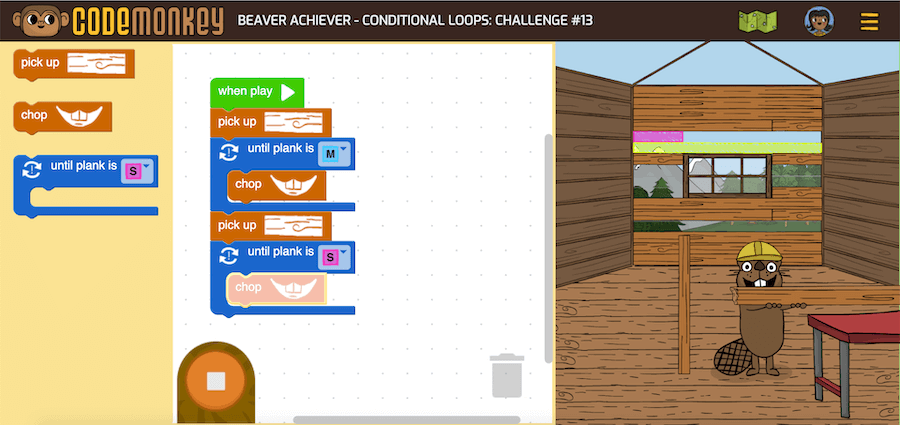What to know about block coding for kids – The visual coding language that took coding from the few to the many
Coding for Kids
You have probably heard about coding. If you haven’t, coding is the instructions people write in order to tell computers what to do. Since coding has become very trendy in the last couple of years, the awareness for it has grown exponentially. What was once viewed as a skill for only a select few has transformed into a subject that any teacher can bring into their classroom. In other words – today students as young as 8 learn to code and even excel in it!
There are many cases where young students have shown real skill in the subject. For example, an 11 year-old boy named Yoav first got into coding through CodeMonkey and now teaches coding and is studying it at a university! Yes, he is only 11 years-old and is probably a genius, but the fact that students are learning to code from a young age has exposed him to the subject and helped him discover his talent early on. This is no small feat and today making computer programming accessible is the goal of many coding initiatives throughout the world. With so many great resources available, text-based and block coding for kids has become commonplace.
11-year-old Yoav dressing up as a programmer Yoav with his report card from the Open University in Israel
Where did Block-based coding begin?
You may be wondering when students first started learning the skill that has until recently been viewed as relevant only for adolescents and adults. It all started in 2003, when MIT developed the first basic computer language, known as Scratch, that was intended to teach kids to code. Since then, coding has garnered a new reputation – anyone can and should learn to code!
To put this into perspective, today toddler coding classes have become a must-have for nurseries in the UK. In the past, people would have thought this to be impossible but with the UK looking to develop more skills in toddlers, coding jumped to the top of the list. More and more parents alike want to future-proof their children with coding skills. Parent and MAMA.codes founder Liane Katz even went as far as calling coding a “21st century superpower.”
More on Scratch – Code Blocks
Scratch was the first block coding language, meaning that the lines of code are written on blocks that students can drag and drop in order to build games and other visual projects. The revolution that Scratch introduced was the belief that young students can easily learn programming when they do not have to write out the code itself. Writing text-based code can be tricky because every piece of syntax matters and can disrupt the program from running. If a student forgets just one space, comma, or period, their entire code will not work. Scratch does not require students to write which solves the issue of writing-based errors.
Block-based coding is great for younger students who cannot write. However, once students are comfortable with writing short sentences, they should be ready for a text-based programming language. Today, there are many text-based coding languages such as CoffeeScript and Python that are used in the workplace that students can learn in a fun game-based environment. These languages have an easy syntax so students are less likely to get frustrated. The benefit of learning a text-based language is that it develops the skill of coding and paves the way for students to then easily learn other coding languages.
Block Coding Websites
You can introduce coding to your preschoolers and kindergarteners through block-based coding. CodeMonkey, previously known as a text-based coding platform, has recently released its first block-based course for 4-6 year olds. Block-based coding games are perfect for preschoolers because they are still learning their ABC’s.
CodeMonkey Jr. is a pre-coding course that uses graphical blocks to program a monkey so it can catch bananas and unlock a treasure chest. The instructions (or arrows) in the game are represented in blocks that preschoolers arrange in a row to tell the monkey which way to walk and jump. Along the way, preschoolers learn logic, algorithms, sequencing, loops, counting, direction and orientation.
While Scratch Jr. is a block coding website and app where 5-7 year olds create their own interactive stories and games, CodeMonkey Jr. is a self-paced game with an intuitive interface that teaches pre-coding to 4-6 year olds. CodeMonkey Jr. is also designed to be taught in the classroom, with block coding lessons in the works.
Scratch Jr. Interface CodeMonkey Jr. Interface
There are also block coding websites for older students. CodeMonkey offers a new block coding course for 1st and 2nd graders called Beaver Achiever.

The most important part about block coding for kids, is that it broke the misconception that coding is only for adults. With the right courses, coding can even feel like a game for kids. Although block coding is not a substitute for real (text-based) code as it has its limitations, it bridges the gap so younger students can learn about coding sooner.
The benefits of block-based coding are that it teaches students how to give clear instructions and organize their thoughts in the form of writing sequences. Block coding also helps young children practice coding concepts and computational thinking. We recommend trying block coding out with your young ones, who knows – maybe they will grow up to be the next Mark Zuckerberg!









